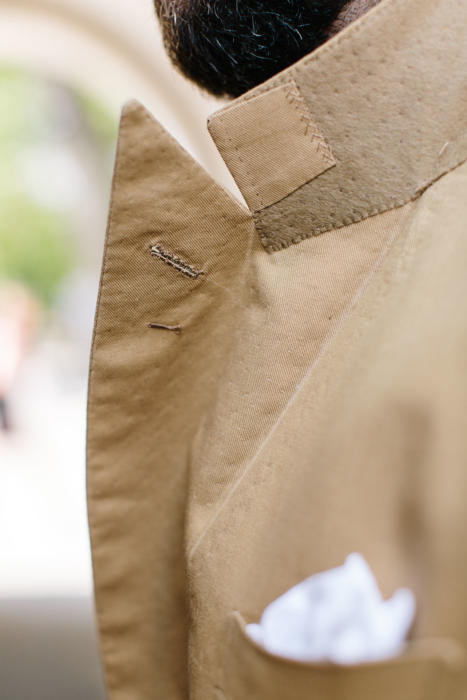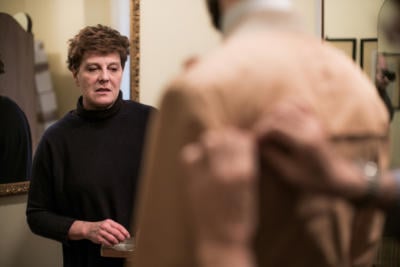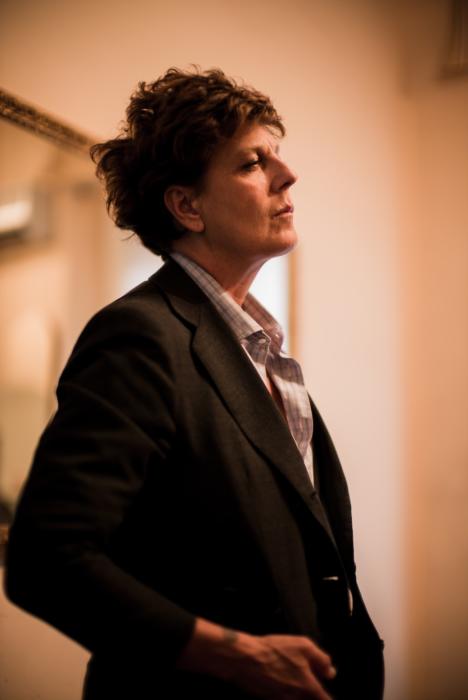
Ferdinando Caraceni is one of the world’s best-regarded bespoke tailors, based in Milan. It has been run since his death in 2004 by Ferdinando’s daughter, Nicoletta, and they have made me three jackets over the past 10 years. You can see them and other background information on their brand page here. Recently Nicoletta announced that the house would be closing. She granted PS the sole interview.
Hi Nicoletta, I was very sad to hear about the atelier closing after so long. Why did you feel you had to?
It had been a long time Simon – I started work there when I was 23 years old, under my father. I had been visiting the shop with him for longer than that though. I remember on Sundays I would be told to ‘go with Papa’, and I would think we were going to the gardens in the car. But no, it would be here, to the atelier, where he had some things to do.
Alora…when I started I was 23 years old, and I was very silent. This was 1982. It wasn’t an easy time for a woman to be in a bespoke atelier. The first two years I was very silent.
What was your job back then, what did you do?
I greeted customers, I helped, but most of all I watched. My father [Ferdinando Caraceni] always said that was the most important thing – to observe, to develop l’occhio, the eye. So I would be in the fittings and watch everything, and then hear my father and the tailors talk about it afterwards – ‘did you see the fit of the shoulder?’, ‘yes, it had a defect’. You learnt to see what they did.
But when I had nothing to do, he said I should go and find some fabric, blow off the dust, and touch and understand it. My father was passionate about fabrics, more than anything else. He could identify anything just by feeling it, closing his eyes. And he taught me to do the same – to feel whether it was worsted or woollen, to know the weight (always in ounces, not grams).
Have you found materials have changed in the past 40 years?
Yes, you can see that from the cloth we have in the shop. Particularly in things like cashmere coats. In the past they might have made an amount of cashmere into 100,000 metres, but today it is 200,000. There is so much less in every centimetre, and then it is pressed to take the life out of it.
I assume much of that is how expensive good raw materials have become over the years, and yet how many people want cashmere. It’s hard to keep it affordable.
You’re right, you understand. And whenever they have the choice, they find ways to make it cheaper and take the quality out of it, because nobody notices. It is a death of culture in a way, of understanding quality.
I have a coat of my father’s from 1978 which I still wear today, 50 years later – like my smoking [dinner jacket, covered here]. It is still perfect.
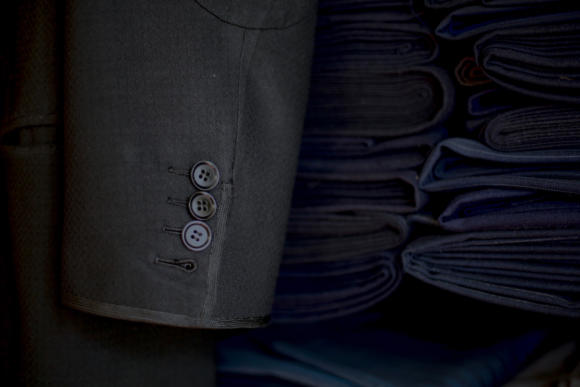
Did you ever want to hand over the business to your children, in the same way as your father did to you?
I have two boys, but I never forced them, because I understand that I have a very idealistic idea of this job. I think you have to have a real passion for it, otherwise you just can’t do it at the best level.
Did they want to be involved at any point in their lives?
They never asked. I often brought them into the atelier when they were small – I would tell them to come with Mama and show them everything. But I never saw in them that desire – they never said ‘Mama, it is so beautiful, I want to learn’.
I was different. I remember when I was at college, before university, my father would say I should come to Paris with him, to help. I was very excited, but all I saw was the inside of the car, and clients’ homes. We would visit Yves Saint Laurent’s house, Madame Rochas’s home, Mr Caracciolo, Michel Guy, the French Minister of Culture at the time, but I saw nothing of Paris.
Still, that first trip was an epiphany for me, I loved it and it was the first time I really understood my father. Before then when I was asked in school what my father is, I would say he was a tailor – fine, he makes suits. But this is when I understood the artist he was, the affection these people had for him.
Perhaps I have already told you this Simon, but the first time I saw Mr Yves Saint Laurent it was in his house, we were waiting, and then a door opened, he came out and said ‘Buongiorno Maestro!’, in Italian, and they hugged. In that moment something changed.
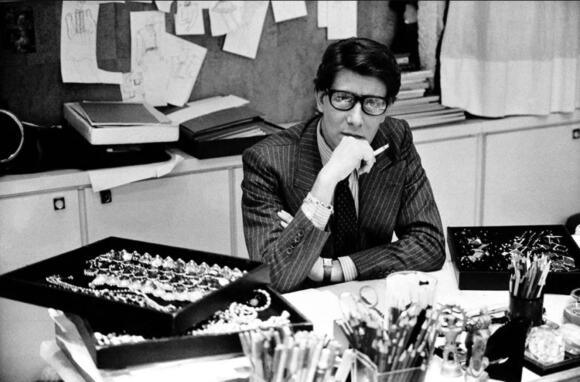
What did you help with on those trips?
Sometimes it was to translate. I was studying French and he would tell me ‘tomorrow you don’t go to school, you come with me’.
Is the problem today that young people have more choice? That your sons feel they can do anything where perhaps you did not?
I’m not sure actually. In the eighties there were many choices. When I took my degree they offered me a place at the university. My thesis was important, it was in Anglo-American literature, and they offered me a job as an assistant. Or I could have been a journalist – young people in the eighties had more choices than they do now. Today many people emigrate; there are fewer jobs in Italy.
So I don’t think it was this. I just think craftsmanship jobs need great passion. You understand, you have to be at a table for eight, nine hours with a needle in your hand. It takes a love of things made by hand.
But that’s also different, right? That’s about tailors, rather than you or your sons who would have been running the business. Is the real problem a lack of young tailors?
Yes perhaps you are right. From 1980 to when my father died in 2004, things were empty, there were no young tailors. When fashions came in the eighties, everyone wanted to be a stylist. People came to us from Marangoni [the school in Milan] and they wanted a job. We asked what they could do and they said they could design suits. But here you design nothing! You learn how to do a great jacket, and you collaborate with the customer.
My father was very sad in the last years, about the future of the business. But then, from maybe 2010 I finally saw some young people who wanted to be tailors. They’ve been to a sewing school and they want to learn. And I invested a lot in them.
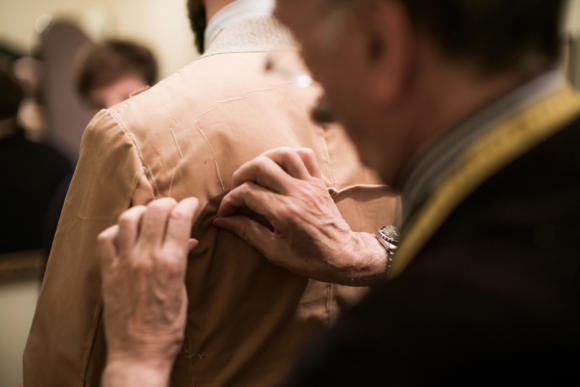
So what went wrong?
Many things. There are many young people who after three years of work, consider themselves finished tailors. I said to them, ‘Listen, when my father was 81, he said he had a beautiful job because there was always something to learn’. This job, if you want to be a great tailor, takes a very long time.
People want to open their own shop now, after a very short time. I see a lot of these, but in my opinion a lot of them are not ready.
I had one young girl, who was not very good when she started with us, but first we taught her to make buttonholes, then do trousers, then to make a fitting, and then this and then this. And after four years of all this training, she decided to leave to go to Dolce & Gabbana. No! From Caraceni to Dolce Gabbana! But she went and it is all lost.
What is happening to the people you do have still working with you?
One is going back to Korea. Two are setting up on their own. Another is taking a sabbatical, travelling. But they are all young people – the old ones retired. I tried to find replacements – some with some experience, but none of them worked out. I tried five in the past three years.
They came from other tailoring houses, too. But after three or six months I said no, no thank you. The work wasn’t good enough, or they wouldn’t respect what we did enough to learn. They wouldn’t try and understand our shoulder, our lapel.
So it was a problem of not being willing to adapt?
Yes but also not being able to.
My plan was, by the time I was 65, this year, to have 10 people in the atelier who could take over together. To have some sort of cooperative, so they all owned the business, they all profited. But I just couldn’t find the people.
My father would say, ‘If you are not stupid, within five or six years everyone can learn to make a jacket. Everyone. But making something beautiful, that is admired, that is not something everyone can do’.
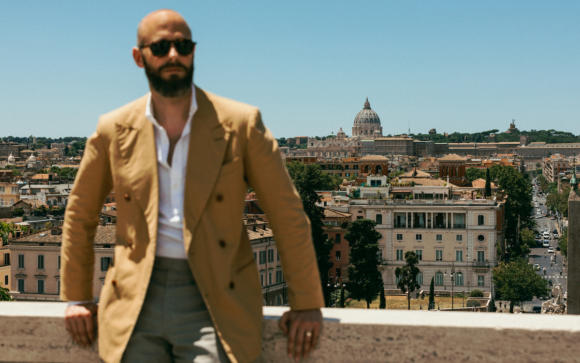
What else does it take?
A bigger understanding of what makes the jacket beautiful, harmonious. Things things like proportion. Understanding what proportions work well on somebody – not just the body but for instance the head too. There are plenty of men with big bodies and tiny heads, many with small bodies and big heads. To translate all of this into a jacket, all of this in harmony, shoulders in proportion with the head, lapels in proportion with the chest – this is the jacket you look at in the street and admire.
Men are so restricted in these clothes. They can wear single breasted or double breasted. So when you see two men in a double breasted – and one is beautiful, one is urgh – then it is in this making, this proportion. Big and small details all in complete harmony.
How universal are these ideas of proportion?
Ah yes good question, and you of course can compare Simon, you have so many different styles in your wardrobe!
People have their different styles, I know this. You and I have talked about this, and you know I don’t like the shoulders of your other suits – they look so sad, they go down. But I can see the style there, that is different.
Where do you think an existing customer should go, if they still want tailoring like yours?
I can’t say, I never talk about other tailors, you know this. Others have their own style, it is not like ours. I would only say that in general that true, great true bespoke tailors are very few today.
When we had those tailors, we paid them well, I wanted them to stay with us. And they did – Sergio was with us for 42 years, Rocco for 32, Anna for 25. People who stay with you for their whole lives, because they are family, and they grow with you. People who learn your calligraphy, as my father said.
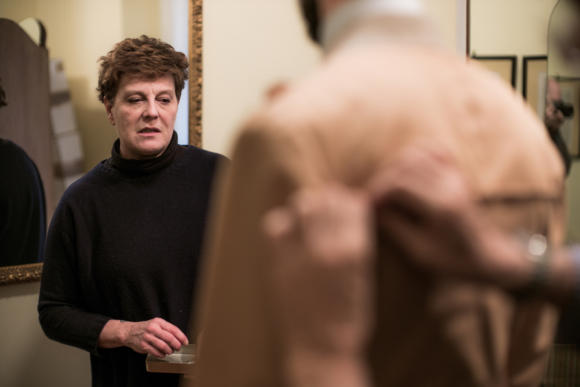
Have you been trying to finish off all the commissions you still have?
Yes we have been telling everybody to come, though some will not, maybe because they are abroad. When you have customers in New York, in Argentina, in Mexico, they may not come for a year. But we need to stop sometime, otherwise I never will.
What are you doing with other things in the atelier, like the cloth?
We are asking customers and friends to come round, to buy some. Then the rest I will sell.
Has anyone offered to buy the business?
Yes, it happened a lot when I first started telling people that we were closing. One family I told, that we had made for the grandfather, the father, now the sons, they were really shocked, telling me no, I couldn’t do this.
I had some lovely letters from clients in London, in New York. They said they would create a society of the best clients, to help. But it’s not a financial problem, the demand is not the problem. It is the tailors.
And I don’t want to carry on producing just for producing. I don’t want to produce anything less. You see some tailors, and people say ‘Oh it’s not the same as it was, the quality has reduced’. I want to live in the memories of people instead, a fine sweet memory.
Do you think there’s a particular problem with tailors planning for succession? Not many seem to manage this well unless there is a willing son or daughter. When people do leave tailoring houses, they always seem to set up on their own, rather than joining forces.
Yes it is difficult. Because even if those tailors could all work together, it needs one vision, one passion to drive things.
I am a little polemic, you know this. We have known each other for many years and you know me. But you need that kind of attitude to keep these things going.
And I feel that in the past 30 years we have seen changes such as took place in the previous 300. The big fault, the big reason things have got worse especially in tailoring craftsmanship, is fashion. Fashion has destroyed so many crafts.
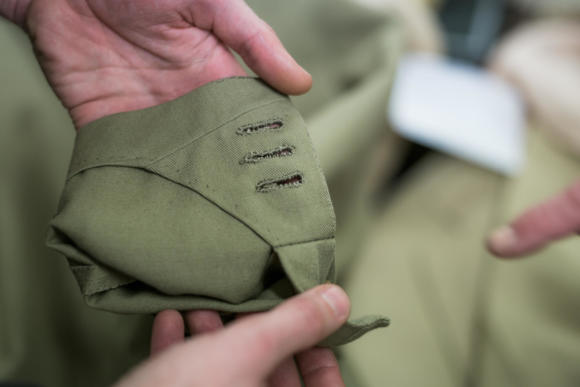
You see the news today, and it’s ‘He was seen in Cannes, on the red carpet wearing this flawless (!!) dinner jacket by XXX (some famous brand) and it’s terrible! It doesn’t fit at all! But all that matters is the actor, the name, the brand, the event. All marketing.
Does this make beauty? No. It has nothing to do with it. People today are losing the capacity for understanding Beauty – how things are made and what makes them beautiful. They have lost their personal sense of Beauty, and they have lost the Culture.
It’s all about culture in the end. I always say that for my clients to come to us, it was a cultural choice as much as a clothing one. They were cultured people, they had their table made by hand, their sofa, not just their shirts, their shoes. These things were all made hand, by craftsmen – not by brands – and they understood them.
It was a joy to serve these kind of people, because they appreciated the art. It was a joy to see them collect a finished garment, to examine it, to put it on, and love it.
Today – it happened to me about a year ago – someone came in and said ‘I always go to Prada, to Gucci. But now I think I want a Caraceni in my wardrobe’.
I kindly told him I was too full of orders and I let him go away... This is the sad state of things today. I will be no part of it.
